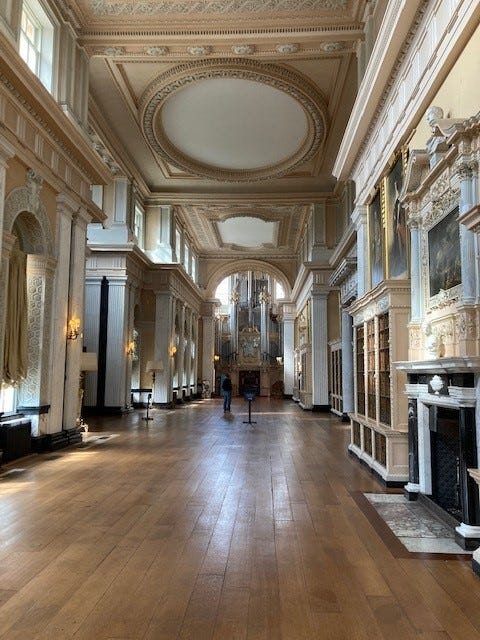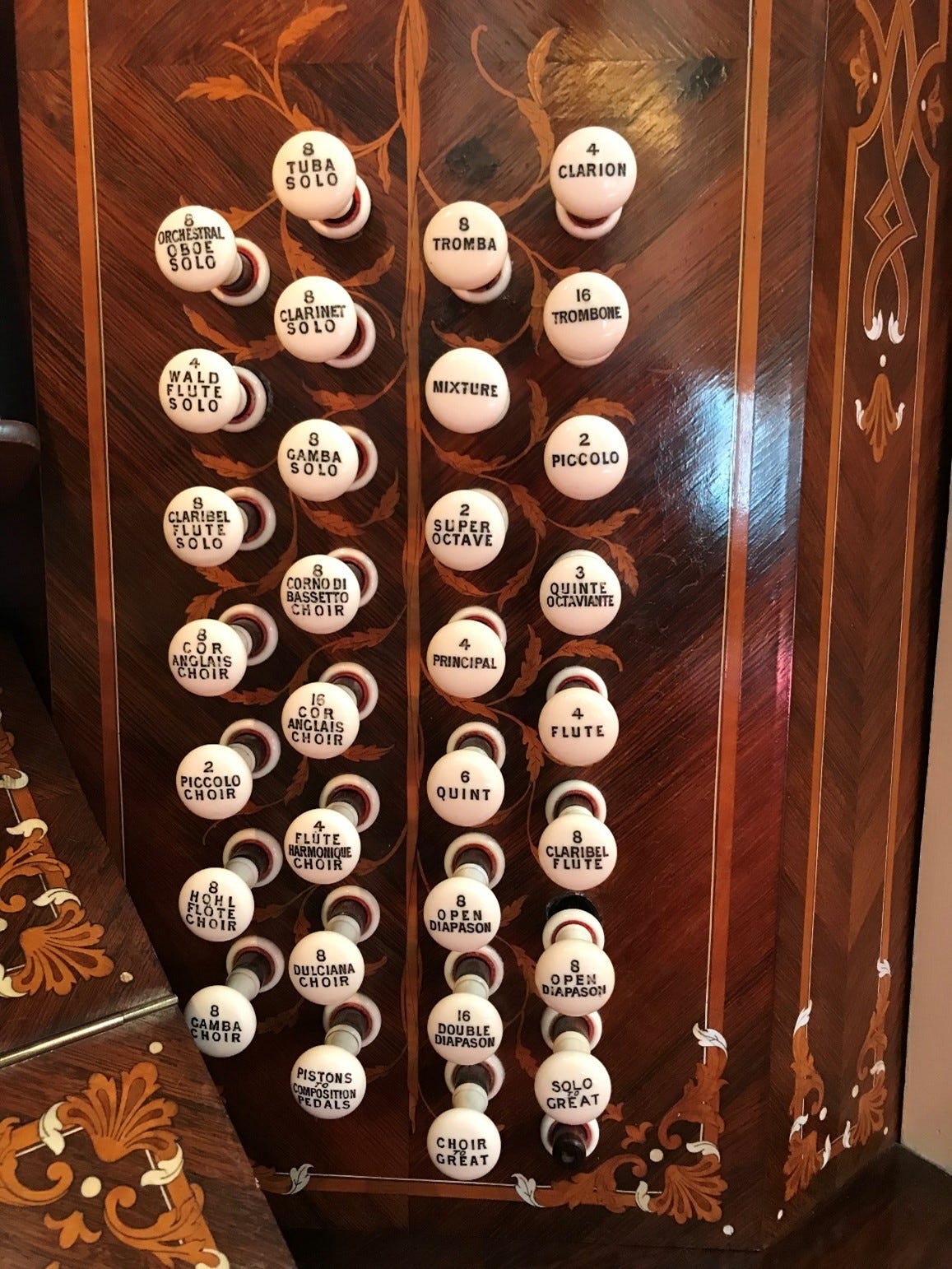The organs at Blenheim Palace
Over the last couple of years I have been fortunate to have been invited by the organ curator, Andrew Patterson, to give a number of Sunday lunch-time recitals on the Willis organ in the Long Library at Blenheim Palace.
The Long Library is 150ft long and two stories high. It contains over 10,000 books and at the north end is a magnificent Father Willis organ, installed in 1891. The organ was commissioned by the 8th Duke who was Winston Churchill’s uncle. Sadly the Duke died just a year after the organ was installed. It is reputed to be the largest house organ in Europe. The specification is here. There are 53 stops on four manuals, using a tubular pneumatic action.
Playing the organ is quite an experience. Because of its height it is very difficult to gauge the balance between the manual divisions, and with the pedal ranks. There are expression pedals to the Swell and Solo but they are either open or closed, and are not easy to operate.
Another challenge is that many of the stop knobs also have the division written on them, which makes identifying them at speed quite difficult, especially with the stops at the bottom of the Solo registers and the top of the Choir. You will also see that there are two Open Diapsons on the Great which do not sound the same.
There are some combination pistons but as with many elements of the organ they are in need of renovation. As a result recitalists have to resort to pulling and pushing stops with their hands. The action is on the heavy side but that does mean you take care over every note. Playing the Widor Toccata is not recommended.
A feature of the organ with significant historical importance is a Welte player unit, which was added by Willis in 1931. Blenheim has 70 rolls specially cut by eminent players including Goss Custard, Hollins, Lemare, Bonnet and Dupré. Andrew Patterson tells me they weren’t cut for the Willis organ, so the registration selections don’t work properly. It was however possible to manually register while the Welte was playing, but it did not reflect the original sound from the organs they were recorded on.
Andrew tells me that he has only seen the Welte running once, and there was a lot of air leaking. The Palace would like to renovate the Welte equipment as well as the organ itself.
The effort of playing the organ is well worthwhile. The quality of each stop is superb and it is as much a delight to play quietly on 8’ and 4’ flutes as to use the very considerable power of the full organ. It is very much an orchestral organ with very effective solo reeds. Because of the variety of voices the instrument loves being used to play transcriptions. I’ve played everything from Finlandia to Faure’s Pavane and these and other transcriptions show the organ in its full glory. Yes, you can play Bach but not a trio sonata! The acoustic is good but the organ is heard at its best from perhaps half-way down the Library.
There is a video of Andrew playing Nimrod from the Enigma Variations (which are roughly contemporary with the installation of the organ) which gives a good indication of the orchestral ethos of the organ. Andrew also demonstrates the need to change the registration by hands as the piece proceeds, especially in creating the diminuendo at the end of the piece!
The recitals last an hour from 1.30pm and the audience is mobile and walks past the end of the organ bench to reach the outside of the house. The Long Library is the last room on the full tour. Many visitors will stop for a while to listen to a few pieces, and many come up to you to ask about the instrument and how it works. I usually play quite short pieces to give as much variety as possible for people wishing to stand and listen for ten minutes.
My most challenging recital was on the Sunday after the death of Queen Elizabeth II. I’d planned to play quite triumphal music to mark the Jubilee but at very short notice and no chance to practice I had to create a totally different music list to reflect the sorrow of the nation.
There is also a small two manual tracker chamber organ in the Chapel that is squeezed under a set of stairs. There are some photographs of it on the National Pipe Organ Register. The Chapel is private.
I will happily admit working extra hard on the pieces I play in my recitals. The organ seems to know that it is being played by someone who cares for and respects it.
(Updated with information on the Welte equipment on 31 July 2023)






